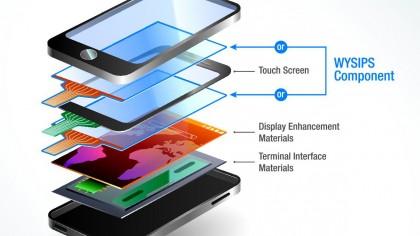Why are mobile phone batteries still so crap?
Battery life hasn't kept pace with advances in mobile computing - but that could change soon
Others are working on lithium-sulphur, lithium-seawater, even lithium-air projects, each of which has their own possible advantages. PolyPlus seawater technology could deliver four times the battery life of li-ion, for instance, while "air-cathode" research (including IBM's Battery 500) suggests the batteries wouldn't only outperform li-ion, they'd be so lightweight that they could allow electric cars to finally have the range of their petrol-based cousins.
Next generation
While some think simply tweaking lithium-ion is the way to go, others are working on rather more revolutionary ideas.
Perhaps one of the most promising areas of battery research is based around graphene. A single layer of carbon, the material can vastly outperform existing technologies, recharges in a few minutes, and is even flexible, perfect for wearable devices.
Science fiction? Not at all. The UK government has allocated £21.5 million to develop commercial applications for the material, and companies like Vorbeck Materials are working on producing graphene batteries right now.
Elsewhere, Harvard Professor Jennifer Lewis has demonstrated the use of 3D printing to build an integrated stack of electrodes, which could allow batteries to be reduced to the size of a grain of sand.

At the moment, the main benefit is the reduction in weight, Lewis told us: "We are working on the next generation design with improved electrode compositions to further enhance their performance. We certainly hope that they will outperform regular Li ion batteries, but this has yet to be demonstrated."
Another new idea goes a step further, rethinking battery technology at a much lower level. New microbatteries developed at the University of Illinois integrate their anodes and cathodes at the microstructure level, allowing recharge times to be 1,000 times faster, and batteries to be one thirtieth of their current size.
Sign up for breaking news, reviews, opinion, top tech deals, and more.
"It's a new enabling technology," said James Pikul, first author of the paper: "It's not a progressive improvement over previous technologies; it breaks the normal paradigms of energy sources. It's allowing us to do different, new things."
Power up
The future of batteries has plenty of promise, then - but mobile users need more power right now. The quickest workaround seems to be finding new, hassle-free ways of recharging. And they don't get much more convenient than Wysips Crystal, the first solar recharging technology you might actually want to use.
The system uses an ultra-thin film which can be placed behind your device screen. It's up to 90 per cent transparent, so you won't even know it's there, yet is still enough to generate a useful recharge level from any source of light.

What can you expect? The company told us: "Right now the system generates 2.5 mW/cm2 in direct sunlight, which should mean an extra 2 to 4 minutes talk time for every 10 minutes of exposure."
Only really useful in an emergency, then, but there's more. The company aims to double this performance by the end of 2014; it's also due very soon, and at a price that everyone can afford. The company explained: "Wysips Crystal adds just $2.30 to a mobile phone's manufacturing costs, and the first mobiles equipped with the technology will be on the market in early 2014."
Here in the UK, of course, direct sunlight can sometimes be hard to find, but fortunately there's another long-awaited technology which is coming very soon: wireless recharging. It's already available at a few places in the US (Madison Square Garden has 600 wireless charging spots), for instance. And the idea could be about to go very mainstream indeed, with Starbucks apparently due to introduce the technology soon, and McDonald's Europe already beginning trials.
The battery world may move very slowly, then, but finally it's beginning to change, and we should see the emergence of real, meaningful improvements in current technology as soon as next year.

Mike is a lead security reviewer at Future, where he stress-tests VPNs, antivirus and more to find out which services are sure to keep you safe, and which are best avoided. Mike began his career as a lead software developer in the engineering world, where his creations were used by big-name companies from Rolls Royce to British Nuclear Fuels and British Aerospace. The early PC viruses caught Mike's attention, and he developed an interest in analyzing malware, and learning the low-level technical details of how Windows and network security work under the hood.